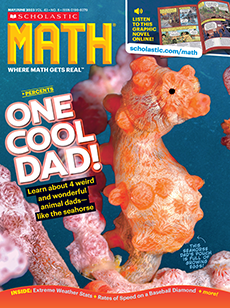Next time you’re eye-to-eye with a fly, take a closer look. Thousands of tiny ommatidia (cells that receive light) cover each eye. Like human eyes, each one has a cornea, a lens, and photoreceptor cells that can turn light into information the brain understands. But possibly the most surprising thing about ommatidia is their shape: Each one is a tiny hexagon!
That isn’t the only place in nature where hexagons pop up. When you catch a snowflake or blow bubbles in water, you’re catching and creating hexagons too. Once you start looking for this six-sided shape in nature, it’s impossible to miss!
Have you ever been eye-to-eye with a fly? Next time, take a closer look. Thousands of tiny cells that receive light cover each eye. Each one has parts that are similar to those in a human eye. But possibly the most surprising thing about these cells is their shape. Each one is a tiny hexagon!
That isn’t the only place in nature where hexagons pop up. When you catch a snowflake or blow bubbles in water, you’re seeing hexagons too. Once you start looking for this six-sided shape in nature, it’s impossible to miss!

